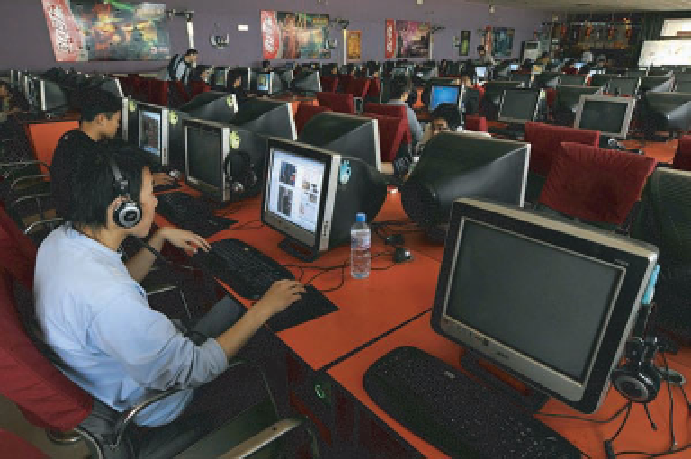Information Technology Reference
In-Depth Information
China has over 210 million Internet
users online, which is only 16
percent of its population.
(Source: Courtesy of Reuters/STR /
Landov.)
remained connected, however, through use of the
Internet Protocol (IP)
, which enables
traffic to be routed from one network to another as needed. All the networks connected to
the Internet speak IP, so they all can exchange messages. Table 7.1 outlines a brief history of
the Internet. Katie Hafner's book,
Where Wizards Stay Up Late: The Origins of the Internet
,
provides a more detailed description of the history of the Internet.
3
Internet Protocol (IP)
A communication standard that
enables traffic to be routed from one
network to another as needed.
Table 7.1
Event
Date
A Brief History of the Internet
ARPANET is created
1969
TCP/IP becomes the protocol for ARPANET
1982
Domain Name System (DNS) is created
1984
Tim Berners-Lee creates the World Wide Web
1991
Commercial Internet Exchange (CIX) Association is established
to allow businesses to connect to the Internet
1991
Today, people, universities, and companies are attempting to make the Internet faster
and easier to use. To speed Internet access, a group of corporations and universities called
the University Corporation for Advanced Internet Development (UCAID) is working on a
faster, alternative Internet. Called Internet2 (I2), Next Generation Internet (NGI), or Abi-
lene, depending on the universities or corporations involved, the new Internet offers the
Internet2 that some call Internet3, which is officially named the
National LambdaRail
(NLR),
is a cross-country, high-speed (10 Gbps), fiber-optic network dedicated to research in high-
tructure to advance networking research and next-generation network-based applications in
science, engineering, and medicine. This new high-speed fiber-optic network will support
the ever-increasing need of scientists to gather, transfer, and analyze massive amounts of
scientific data.
How the Internet Works
The Internet transmits data from one computer (called a
host
) to another (see Figure 7.1). If
the receiving computer is on a network to which the first computer is directly connected, it
can send the message directly. If the receiving and sending computers are not directly con-
nected to the same network, the sending computer relays the message to another computer





